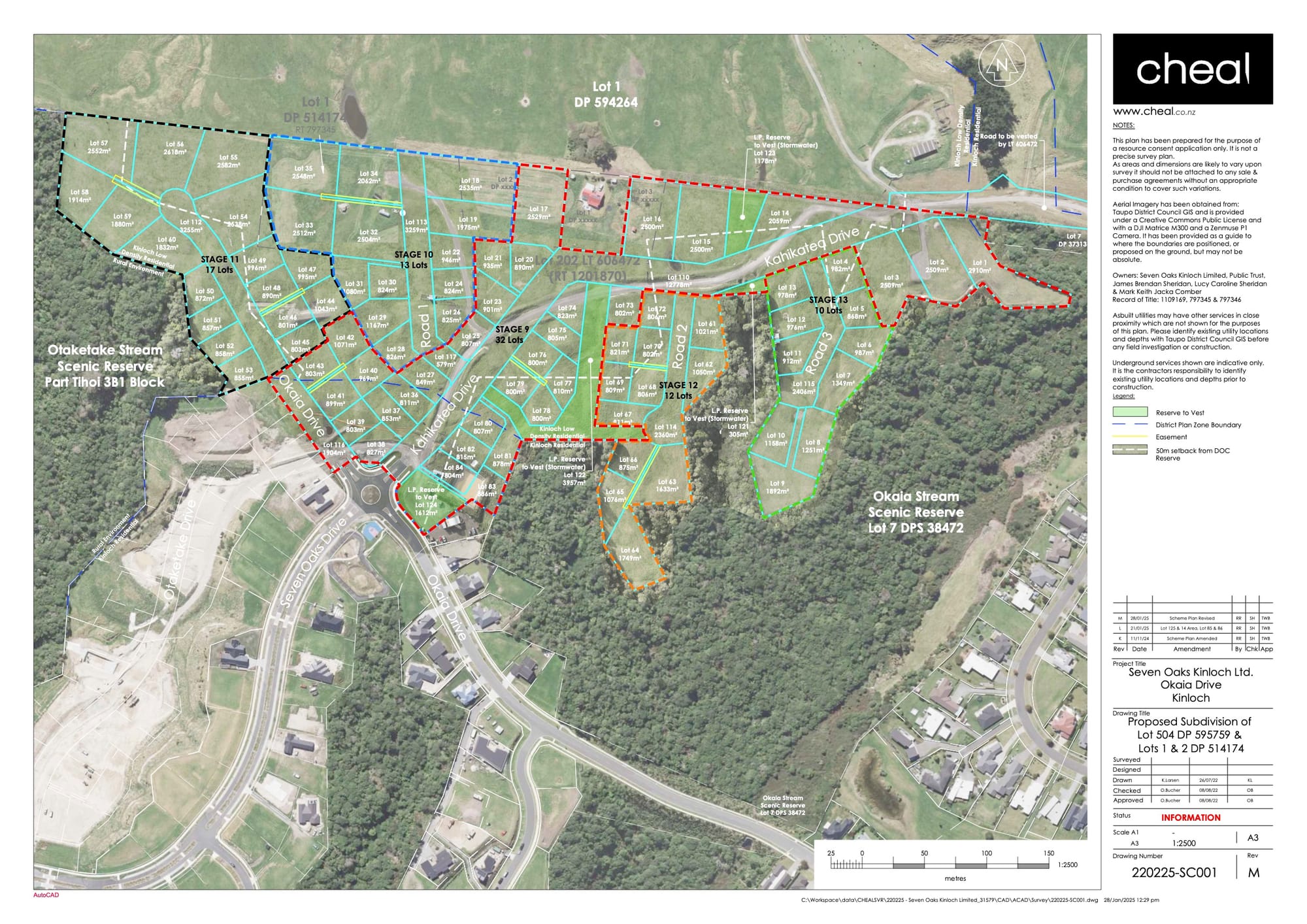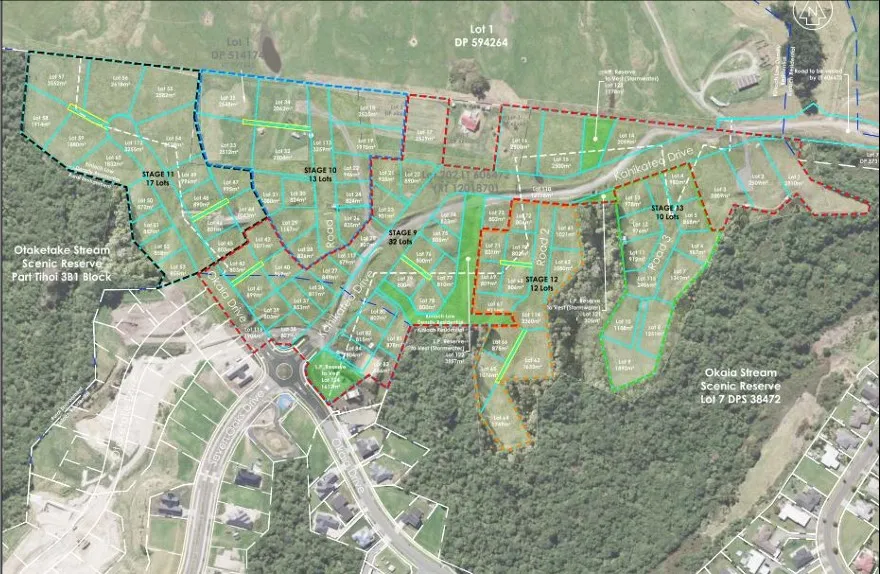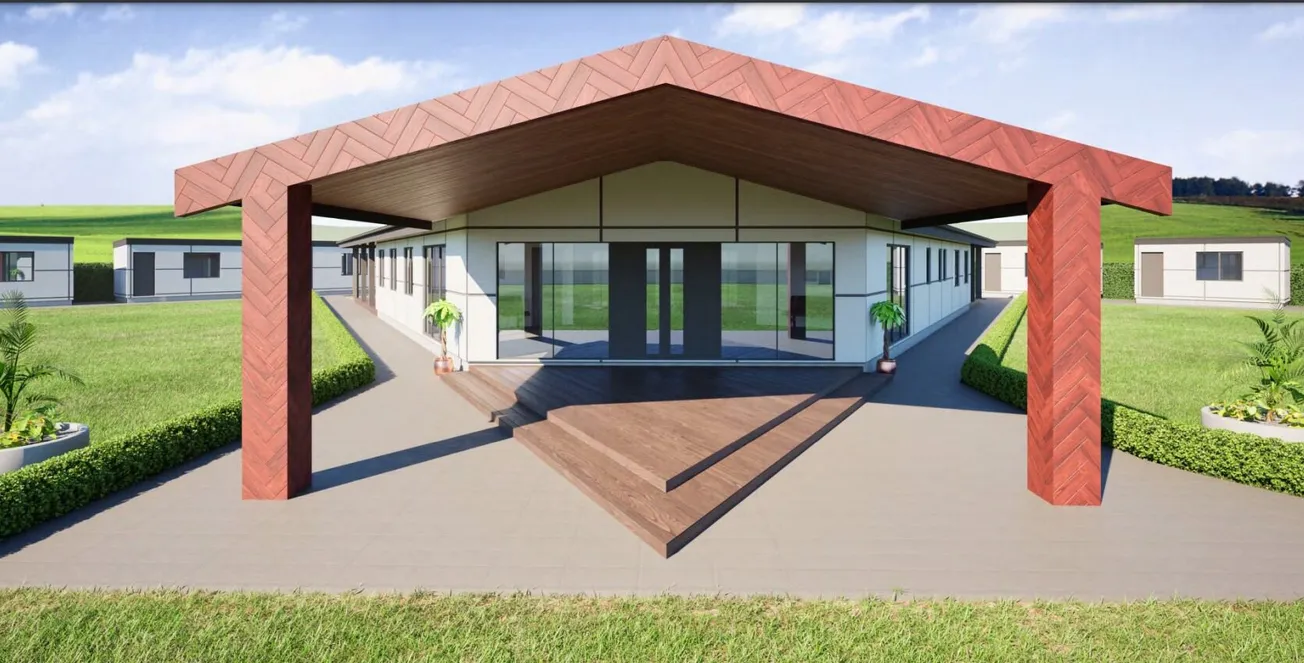Seven Oaks Kinloch has advertised a new subdivision proposal for Kinloch, seeking to develop 84 residential sized lots, with accompanying roads and reserves in several stages.
The developer has already created a number of subdivisions in the area including The Terraces, a neighbouring 55-lot development.
The latest project would occupy approximately 12 hectares of land at the end of Okaia and Kahikatea Drives, west of Kinloch village, the same area that Seven Oaks applied for consent for 100 lots in 2023 but withdrew in late 2024.
While the latest proposal drops the number of lots to 84 and increases the average size, it will still result in a higher density of sections than anticipated for the Kinloch Low Density zone, by an additional 68 lots compared to 16 lots enabled by the Taupō District Plan.
The proposal’s residential lot sizes range from 800m2 to 2548m2.
The development is also seeking to carry out earthworks in excess of the permitted limits and for future development on the residential lots to exceed the provisions in relation to building coverage, plot ratio and building setbacks.
An ecological assessment by Phoenix Ecology finds the development site to be of moderate ecological value, with low value biodiversity attributes and no indigenous vegetation values. Though it may provide habitat for the nationally threatened long-tailed bat, at risk short-tailed bat, and New Zealand pipit, the assessment notes.
The development site is bordered by the Otaketake Scenic Reserve and Okaia Stream Reserve, meaning the proposed subdivision would bring housing closer to these protected areas.
Phoenix concludes the overall effect of the proposed development works to be low, if efforts are taken to avoid and minimise effects. These include sediment control and stormwater management, buffering of lighting and noise effects on the adjacent reserve areas through setbacks, and the consideration of wildlife-sensitive features for outdoor lighting to minimise light pollution.
A restoration planting plan should be used to establish corridors to link habitats across the site, Phoenix says.
In a landscape and visual assessment commissioned for the development, landscape architects Mansergh Graeme argue that the development could actually tidy up the distribution of the different housing densities in Kinloch, and the transitions between them.
Applying a degree of consistency in the broad location of the transition between densities could be considered to enhance the overall visual legibility of the village and aesthetic appeal, the assessment says.
Mansergh Graeme concludes that overall, from a landscape visual amenity perspective, the areas of non-compliance are not considered to result in any significant effects on the wider receiving environment beyond a compliant Kinloch Residential/Kinloch Low Density subdivision – basically as it is amongst other residential development.
“The subdivision will not cause the visual obstruction of any significant features behind it, nor will it appear out of character within the surrounding context,” says the assessment.
Seven Oaks Kinloch have requested a longer lapse period than the default five-year period for the consents, to 10 years for both the subdivision and land use proposals.
In some of the initial consultation with the Kinloch community one couple notes the development would have a serious impact on “lifestyle, views and quality of living” and express concern about “super high density directly in front of our home.”
“We anticipated that (development) would happen eventually. However, for it to be happening so quickly by the circumventing of the Taupō and Kinloch District Plan to allow high density right up to our boundaries, we feel is unacceptable.”







